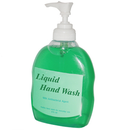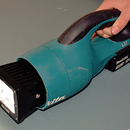Introduction: Engraveing Metal With a Laser Cutter
A way to get great results engraving metal is to make a mask using a laser cutter and electro etching using saltwater.
In this example, I'm going to run through how to make a dog tag out of aluminium but the same principle applies to any project you might like to engrave. The project is aimed at kids an could be their first project as the tools and equipment are very safe to use, and you can get very professional results.
This method can produce highly detailed results so is great for jewellery or markings and labels for tools or equipment
Supplies
You will need some basic hand tools and vice, as well as the following.
- Laser cutter and drawing software (using the software is beyond the scope of this instructable you can look at https://www.instructables.com/id/Making-Stickers-... to get an idea of what you can do)
- Various grits of sandpaper from 40 through to 1000 grit.
- Duct tape, not gaffa tape.
- Power supply up to 24 volts
- Leads and wire a container with saltwater.
- a small sheet of copper of stainless steel to act as an anode
- A buffing wheel or an electric drill with a buffing wheel fitted.
- Metal polish.
- Hand tools saw, files, soft jaws, scriber, square, etc
Step 1: Learning Intentions and Success Criteria
Learning Intentions
- To work safely in the workshop.
- To design a graphic for your key tag in CAD
- To use hand tools correctly and safely.
- To build a dog tag or key tag.
- To be a self-directed learner.
Success Criteria
- I understand the safety rules and I am working safely in the workshop.
- I can follow the instructions independently.
- I can produce a polished tag that is engraved
- I can safely use marking out tools, hacksaw, centre punch, drill press, files, buff, and laser cutter.
Step 2: Marking Out Your Material
Marking out is very important, take your time to get it right, as poorly marked out material will lead to a poorly made project.
It can be usefull to "blue" the material so it is easier to see where you have maked it, this can be done with a marker pen.
I generaly done let young students near the engineers blue as someone always makes a mess with it.
click on the photos there are notes on each one.
Step 3: Shaping and Filing
Before you start, make sure you use soft jaws so you dont ending up making more work for yourself. Vices have teeth that will damage your work. If soft jaws are not used and then you will have to do even more sanding to remove the marks.
If you cant find some soft jaws because some one ate them all (something that happens a lot at high school) the are easy enogh to make, just find some scrap aluminum, and bend it into a L shape.
Check out the photos for each step and notes.
Step 4: Sanding and Polishing
Sanding is not every student favourite task, but the better the sanding the better you polished metal will look.
Sandpaper comes in different grits start with the lowest number and spend more time with the lower numbered grits to get the scratches out.
Start with 40 or 60 grit if you have heavy scratches, (you didn't use the soft jaws!) or 120 for light scratches
With the wet and dry sandpaper, it is important to use plenty of water to get the best results.
You can then use a buffing wheel t polish the dog tag.
Click on the photos and follow along
Step 5: Laser Cutting
Now you are ready for the laser cutter, use some duct tape to mask off one side, it is important to get the tape straight, or it becomes difficult to align on the laser cutter.
It is usually easier to find the centre of your project and set the laser to start from the centre than start it from the edge.
It is also important to get the workpiece straight and centred, you can see in one of the examples in the photos it was off to on side a little and it looks a bit wonky. There is a joke there if you can read Japanese if you cant google "wabi-sabi"
Set the laser at a high speed or to cut paper.
Once the mask is cut you can remove the parts you want to be engraved.
Step 6: Etching
You now need to seal up your workpiece with a wire and tape as shown. The positive lead goes to the work and the negative to a piece of copper or stainless steel.
The water needs to have some salt added to make it electrically conductive, you will know its working when you see some bubbles.
You will need to leave the workpiece in the water for around 5 to 10 minutes but time can depend on the size of the workpiece, how much salt is in the water, the voltage you use.
Make sure the water doesn't get too hot, as it can make the tape peel off.
Once you are happy with the dept of the engraving you can remove the tape and give it a final hand polish.
Now you can engrave the other side.
If you want the engraving a different colour you could paint your project before you remove the tape.

Participated in the
Metal Contest













